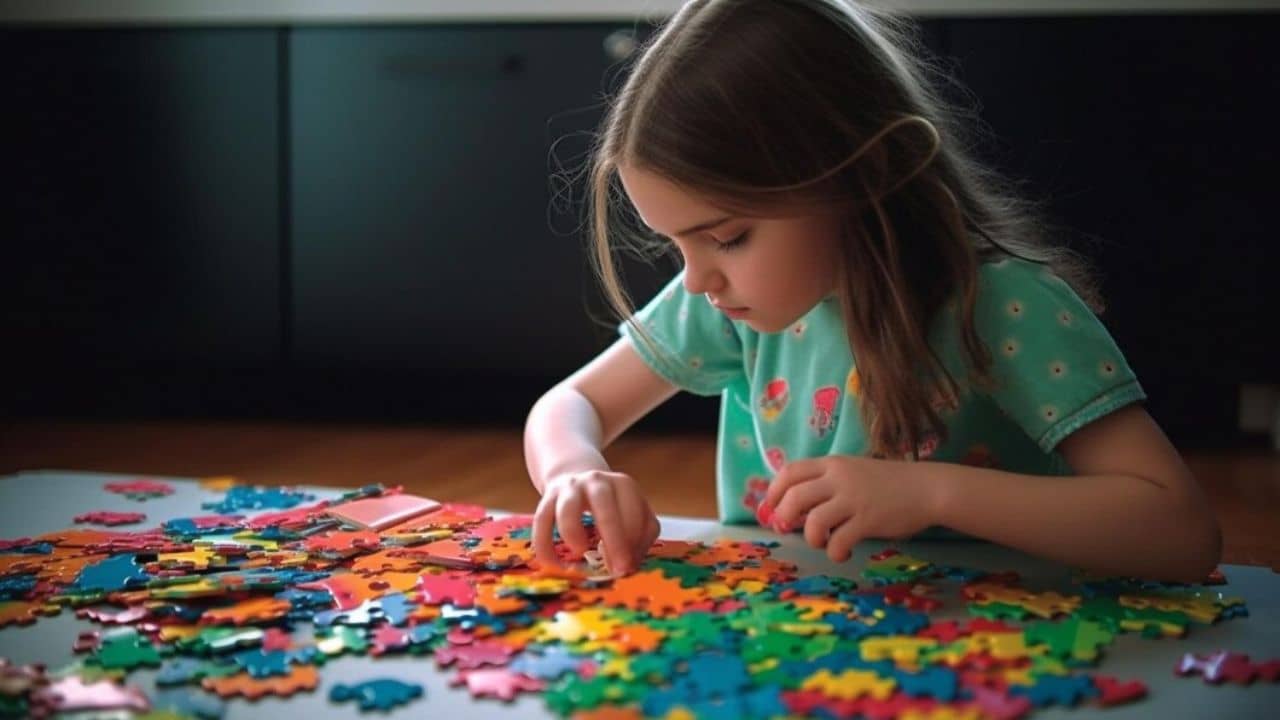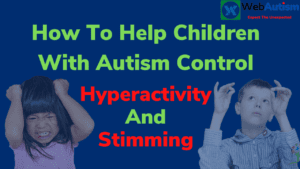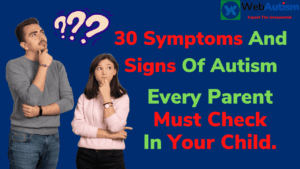Coping with the Diagnosis
Receiving a diagnosis of Autism Spectrum Disorder (ASD) can be a significant and emotional moment for families. In this chapter, we will explore strategies for coping with the diagnosis and fostering resilience within the family.
1. Seek support:
Connecting with others who have experienced similar journeys can provide valuable support. Seek support groups, both online and in-person, where you can share experiences, ask questions, and gain insights from individuals who have faced similar challenges.
2. Educate Yourself:
Understanding ASD and its various aspects is empowering. Educate yourself about the strengths and challenges associated with autism. Stay informed about evidence-based interventions, therapies, and strategies that can benefit your child’s development.

3. Build a Support Network:
Cultivate a strong support network that includes friends, family members, educators, and healthcare professionals. Having a team of individuals who understand and support your child’s needs can make a significant difference.
4. Set Realistic Expectations:
Recognise that every individual with ASD is unique, and progress may occur at different rates. Set realistic expectations for your child’s development and celebrate small victories along the way. Embrace the individual strengths and abilities that make your child unique.
5. Prioritise Self-Care:
Caring for a child with ASD can be demanding, so it’s crucial to prioritise self-care. Take breaks, engage in enjoyable activities, and ensure you have time for relaxation and rejuvenation. A well-supported caregiver is better equipped to provide effective support for their child.
6. Advocate for Your Child:
Become an advocate for your child within educational and healthcare settings. Communicate openly with teachers, therapists, and healthcare professionals. Work collaboratively to create environments that support your child’s unique needs and abilities.

7. Celebrate Achievements:
Celebrate the achievements and milestones, no matter how small. Positive reinforcement can motivate and encourage your child. Recognise and appreciate their progress, resilience, and unique strengths.
8. Participate in Therapies and Interventions:
Engage actively in recommended therapies and interventions. Collaborate with therapists, educators, and healthcare professionals to implement strategies that support your child’s development. Consistent participation in interventions can yield positive outcomes over time.
9. Embrace the Journey:
Autism is a lifelong journey, and your child’s needs may evolve. Embrace the journey, staying flexible and open to adapting strategies as needed. Recognise that growth and development are ongoing processes.

10. Connect with Positive Role Models:
Seek positive role models who have succeeded in various fields despite or because of their autism. Learning about individuals with ASD who have achieved success can inspire hope and provide a broader perspective on possibilities for the future.
11. Practice Mindfulness:
Mindfulness techniques can help manage stress and enhance overall well-being. Incorporate mindfulness practices into your routine, such as deep breathing, meditation, or yoga, to promote a sense of calm and balance.
Coping with an ASD diagnosis is a unique journey for each family. By fostering a supportive environment, staying informed, and celebrating the strengths of individuals with ASD, families can navigate challenges more effectively and provide a foundation for their child’s success and well-being.
1. Emotional responses of parents
Receiving a diagnosis of Autism Spectrum Disorder (ASD) for a child can elicit a range of emotional responses from parents. This chapter explores common emotional reactions and guides navigating these feelings.
1. Shock and Disbelief:
Upon receiving a diagnosis, many parents experience a sense of shock and disbelief. It’s normal to feel overwhelmed by the unexpected news. Take the time to process the information and allow yourself to experience these initial emotions.
2. Grief and Loss:
Parents may go through a grieving process as they grapple with the perceived loss of certain expectations or dreams they have for their children. This is a natural response; giving yourself the space to mourn and acknowledge these feelings is essential.

3. Anxiety and Uncertainty:
Common emotional responses include concerns about the future, the child’s development uncertainties, and anxiety about the challenges ahead. Seeking information, connecting with professionals, and joining support networks can help alleviate some of these anxieties.
4. Guilt and Self-Blame:
It’s not uncommon for parents to experience feelings of guilt or self-blame, questioning whether something they did or didn’t do contributed to the child’s condition. Remember that ASD is a complex neurodevelopmental disorder with various factors at play, and it is not the result of parental actions.
5. Fear of Stigma and Judgment:
Parents may worry about how others will perceive their child and family. The fear of stigma and judgment from society, friends, or family members can be challenging. Educating those around you about ASD and fostering understanding can help mitigate these concerns.
6. Isolation:
Parents may feel isolated or alone in their experiences. Building connections with other parents who have children with ASD, either through local support groups or online communities, can provide a sense of camaraderie and understanding.
7. Advocacy and Empowerment:
Some parents channel their emotions into advocacy and empowerment. They become passionate advocates for their children and the broader autism community. This proactive approach can lead to positive changes and greater awareness.
8. Acceptance and Adjustment:
Over time, many parents find a path toward acceptance and adjustment. This involves embracing their child’s unique strengths and challenges, adapting to the new normal, and finding joy in the journey of raising a child with ASD.
9. Hope and Resilience:
Through challenges and triumphs, parents often discover an inner resilience and a sense of hope. Celebrating small victories, acknowledging progress, and focusing on their child’s development positively contribute to a hopeful outlook.

10. Continuing Emotional Growth:
Emotional responses to an ASD diagnosis can evolve over time. It’s an ongoing process of growth and adaptation for parents. Seeking professional support, whether through counselling or therapy, can be beneficial in navigating and understanding these emotions.
Remember that every parent’s journey is unique, and there is no right or wrong way to feel. Seeking support from professionals, connecting with other parents, and prioritising self-care are essential components of coping with the emotional aspects of an ASD diagnosis.
2. Building a support system
Building a robust support system is crucial for parents navigating the challenges and joys of raising a child with Autism Spectrum Disorder (ASD). In this chapter, we explore practical strategies for creating a supportive network.
1. Connect with Other Parents:
Joining support groups for parents of children with ASD provides a valuable space to share experiences, gain insights, and learn from others who understand the unique challenges. Local and online communities offer opportunities to connect with parents facing similar journeys.

2. Seek Professional Guidance:
Engage with healthcare professionals, therapists, and educators who specialise in ASD. These professionals can offer valuable guidance, share resources, and provide practical strategies for supporting your child. Establish open lines of communication to ensure a collaborative approach.
3. Family Involvement:
Involve extended family members in your child’s support system. Educate them about ASD, share information about your child’s needs, and encourage active participation. Grandparents, aunts, uncles, and cousins can contribute to a broader support network.
4. Build a Team at School:
Establish strong connections with your child’s school team. Collaborate with teachers, special education professionals, and support staff to develop an Individualised Education Program (IEP) tailored to your child’s needs. Regular communication fosters a supportive school environment.
5. Community Resources:
Explore local and community resources that cater to individuals with ASD. This may include recreational programs, social groups, and therapy services. Community organisations and autism advocacy groups often provide valuable resources and support.
6. Supportive Friends:
Maintain connections with friends who offer understanding, empathy, and support. Educate them about ASD to enhance their awareness and ensure a supportive social circle for both you and your child.
7. Online Support Communities:
Take advantage of online platforms and forums dedicated to ASD. These communities provide a space to connect with individuals globally, share experiences, and access a wealth of information and support.
8. Mental Health Professionals:
Consider seeking support from mental health professionals for yourself and other family members. A therapist or counsellor can provide guidance, coping strategies, and a confidential space to navigate the emotional aspects of parenting a child with ASD.

9. Respite Care Services:
Explore respite care services that offer temporary relief for parents and caregivers. Taking breaks and prioritising self-care is crucial for maintaining well-being and resilience.
10. Educational Workshops and Seminars:
Attend workshops, seminars, and conferences on ASD to stay informed about the latest research, interventions, and strategies. These events provide opportunities to connect with professionals and other parents.
11. Encourage Sibling Relationships:
Foster positive relationships among siblings by promoting understanding and acceptance. Encourage open communication and involve siblings in age-appropriate discussions about ASD. This creates a supportive family dynamic.
12. Develop Personal Relationships:
Don’t neglect your personal relationships while focusing on your child’s needs. Connecting with friends, family, and your partner contributes to a well-rounded support system.

Building a support system is an ongoing process that evolves as your child grows and their needs change. Embrace the diverse forms of support available and tailor your network to meet your family’s unique requirements. Remember that you are not alone; a strong support system can enhance your and your child’s well-being.
Note:- These contents are taken from our book “Raising Superstar“





